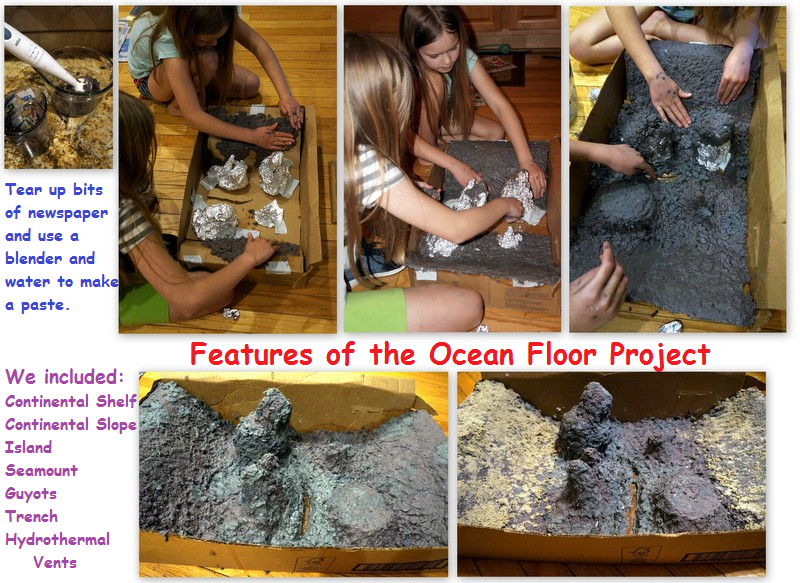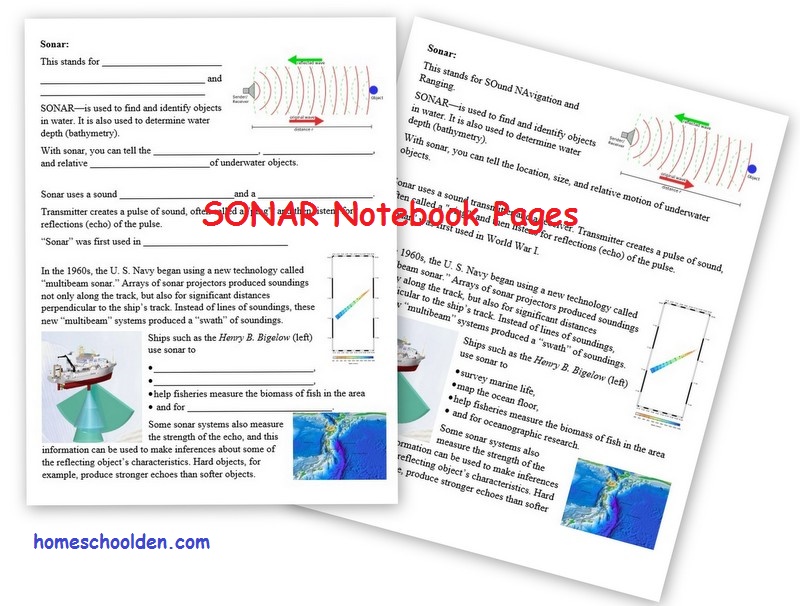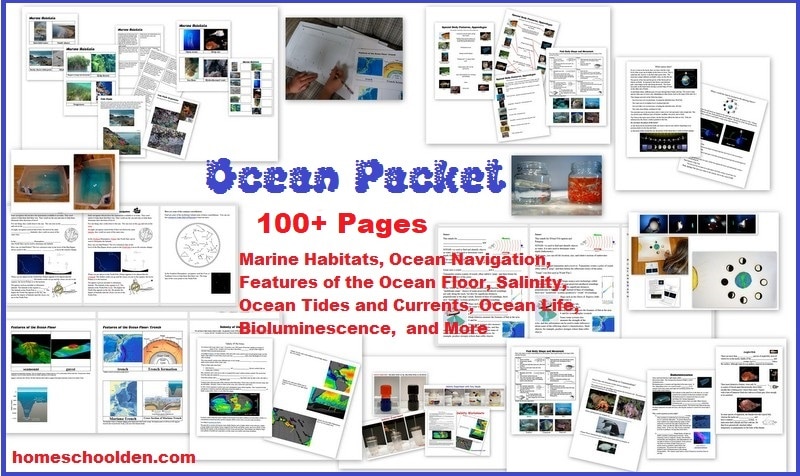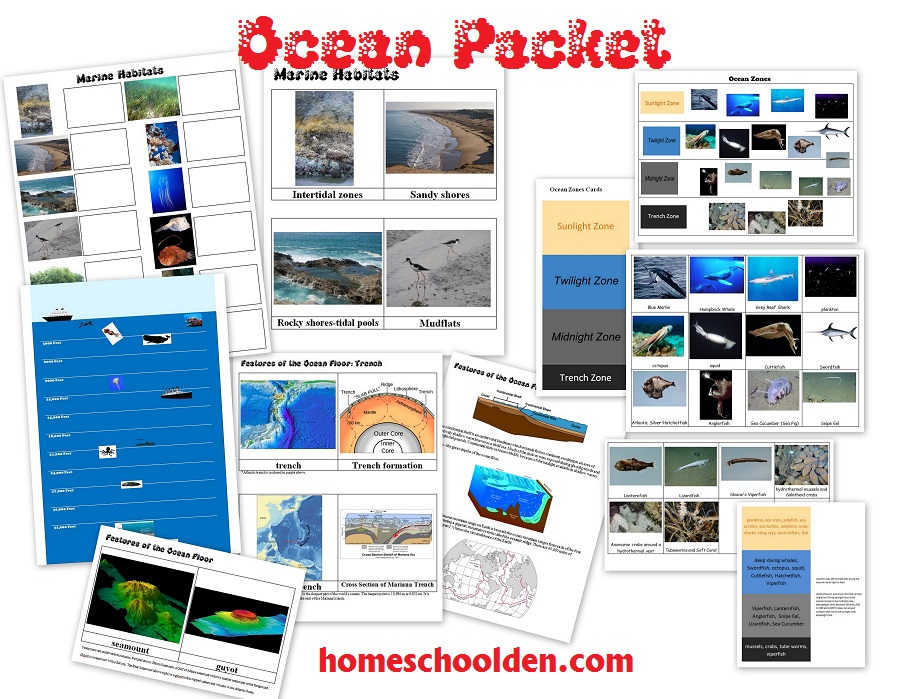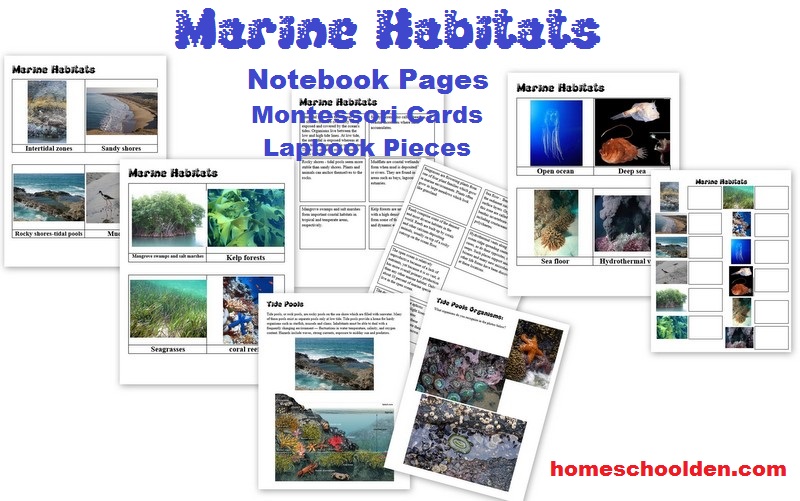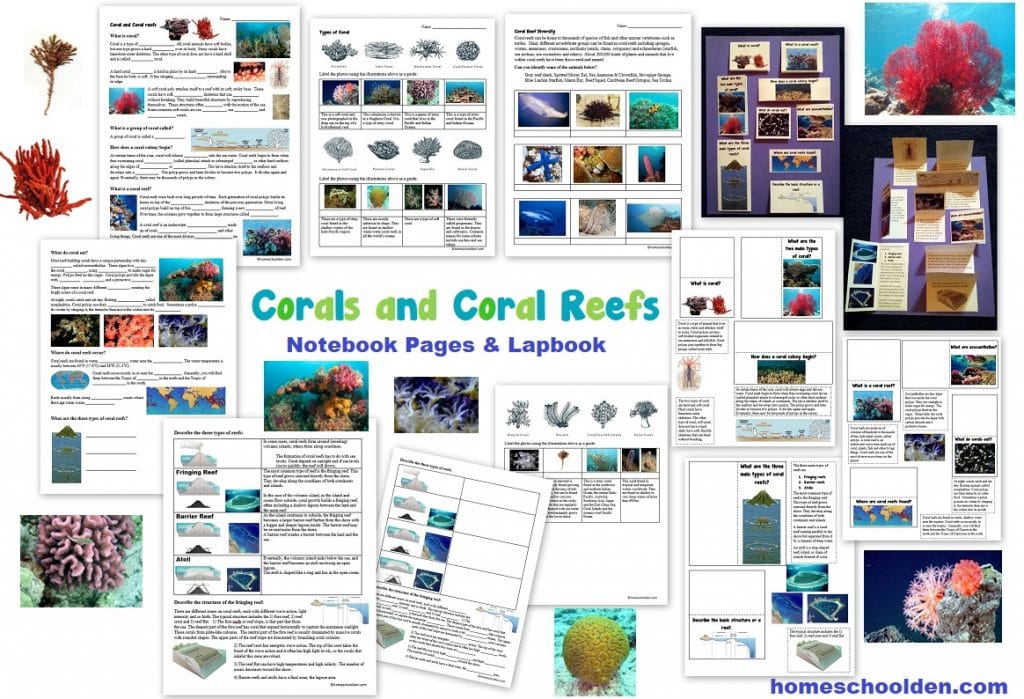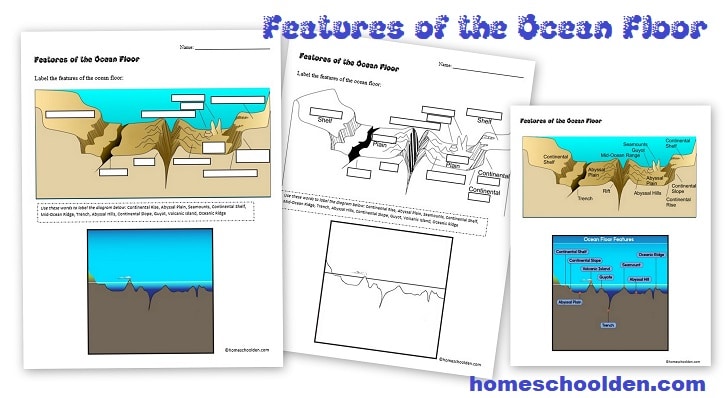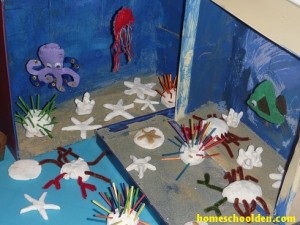Features of the Ocean Floor Projects
I have two really neat hands-on activities to highlight as we learned about the features of the ocean floor.
Over the past few weeks, we learned about the basic features of the ocean floor: the continents shelf, continental slope, seamounts (and islands), guyots, and trenches. The pages below are in our ocean packet. We also learned a *ton* from the Blue Planet (affiliate link – available on DVD and Amazon streaming), an amazing documentary about the history of the world’s oceans and ocean life. We watched all 8 episodes and the kids absolutely *loved* the series!!

After making the basic structures, the girls covered everything with the paste. They included the continental shelf, continental slope, an island, seamount, guyot (flat-topped volcano) and hydrothermal vents. There was also a trench, though it wasn’t very “deep.” 🙂
We also talked about how difficult it was to map the features of the ocean floor. The depth and distance made it impossible to humans to explore until recently.
One technique that was used to find out the depth of the ocean floor was dropping a weighted line down to see the variations in elevation. We tried that ourselves.
To prepare, I strung up a blanket over a piece of rope. I marked an (orange) ribbon every five inches with a line (as a reference point for the kids as they mapped things out on their graph paper). I also marked every three inches out on their weighted string (lower left picture). I placed a number of objects at the bottom of the ocean.
Before they started, I explained what they were going to encounter and showed them what to do so they could actually see how it works. Then I brought them to the back deck where things were set up for them. They tried not to look down over the edge of the blanket. They would count the number of lines and graph that on the paper.
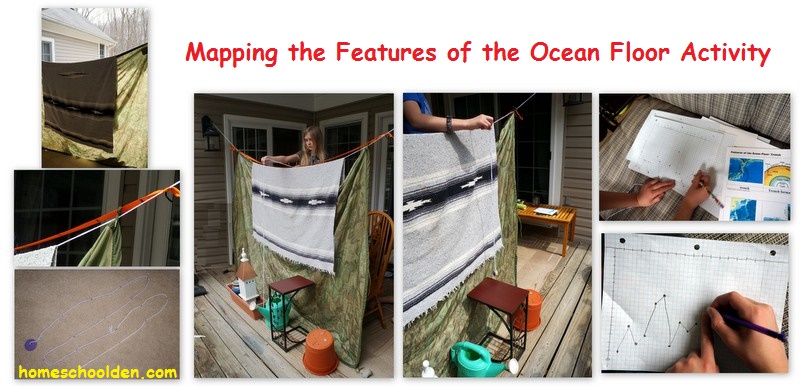
- Sometimes the weight slipped off the object and they couldn’t really tell how high the object really was.
- Sometimes they entered a “trench” and didn’t realize it.
- Sometimes a feature was missed because of the distance between readings.
Finally, we talked about the development of SONAR: SOund NAvigation and Ranging — We talked about what it is and how it is used today. The pages below are from our Ocean Packet:
Our Ocean Packet is available! More details at this post: Ocean Unit
or at our Biology BUNDLE of 5 page.
You may be interested in our other Ocean Unit Posts:
- Ocean Activities: The Moon and Tides (Spring and Neap Tides and more!)
- Ocean Unit: 5 Salinity Activities & Why the Ocean is Salty
- Surface Currents, Deep Sea Currents Activities
- Ocean, Seas and Straits – Pin Map Printable
If you have younger kids you may be interested in the ocean activities we did when they were preschool and early elementary age:
- Ocean Animals and Their Groups
- Ocean Activities: The Ocean Zones, Layers of the Ocean
- Ocean Activities – diorama
Disclosure: Please note that some of the links in this post are affiliate links, and at no additional cost to you, I will earn a commission if you decide to make a purchase.
See you again soon here or over at our Homeschool Den Facebook Page. Don’t forget to Subscribe to our Homeschool Den Newsletter! ~Liesl
